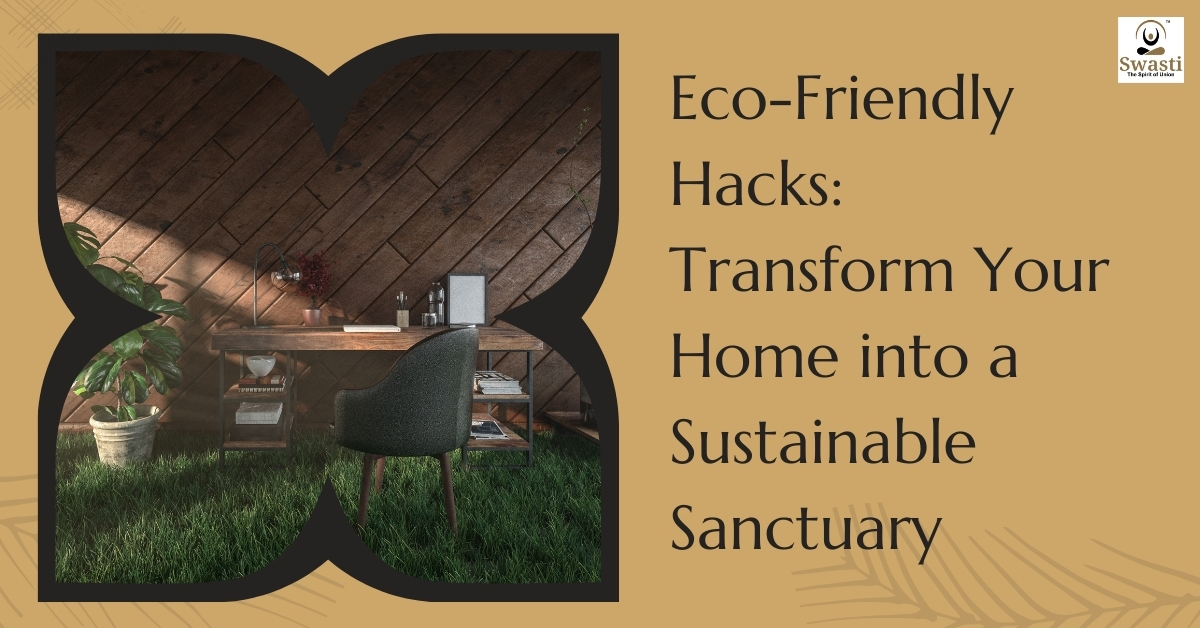In our modern lifestyles, the importance of sustainability can sometimes be forgotten. However, integrating eco-friendly practices into our daily routines is crucial for protecting our environment and ensuring the well-being of future generations. This blog post is dedicated to providing practical, accessible eco-friendly hacks that can help you transform your home into a sustainable sanctuary, improving not only the health of the planet but also your own quality of life.
The Importance of Eco-Friendly Living
Traditional home setups often rely heavily on resources that contribute to environmental degradation, such as high water usage, energy consumption from non-renewable sources, and materials that are harmful to the environment. By adopting eco-friendly practices, you can enjoy numerous benefits including significant cost savings, a reduced environmental footprint, and enhanced personal health. These improvements come from cleaner air, reduced exposure to toxic chemicals, and a more harmonious relationship with nature.
Essential Eco-Friendly Hacks
1. Energy Conservation
Switch to Renewable Energy Sources: One effective way to minimize your carbon footprint is to install solar panels or switch to a green energy provider. This change not only reduces reliance on fossil fuels but also can offer long-term savings on energy bills.
Smart Thermostats and Energy-Efficient Appliances: Upgrading to smart thermostats and investing in energy-efficient appliances can lead to substantial reductions in energy use and costs. These devices automatically adjust heating and cooling when necessary and are designed to operate more efficiently.
2. Water Usage Reduction
Low-Flow Fixtures: Installing low-flow showerheads and faucets can dramatically decrease water usage without sacrificing performance. This simple switch saves water and reduces your utility bills.
Rainwater Harvesting Systems: Setting up a system to collect and reuse rainwater for your garden or toilet flushing can significantly cut down your potable water use, helping to conserve this vital resource.
3. Sustainable Lighting Solutions
LED Lighting: LED lights consume less electricity and have a longer lifespan compared to traditional bulbs. Switching to LED lighting reduces both your energy consumption and the need for frequent bulb replacements.
Maximizing Natural Light: Arrange your home to enhance the use of natural light. Positioning furniture and mirrors strategically can brighten your space naturally, reducing the need to use artificial lighting during the day.
4. Eco-Friendly Building Materials
Bamboo and Recycled Materials: Opt for sustainable materials like bamboo for furniture and building projects. Bamboo is highly sustainable due to its rapid growth rate and minimal need for pesticides.
Non-VOC Paints: Using paints that contain low or no volatile organic compounds (VOCs) can significantly improve indoor air quality and reduce exposure to harmful chemicals.
5. Indoor Air Quality Improvement
Houseplants that Purify Air: Certain plants, such as spider plants and peace lilies, are known for their ability to remove toxins from the air, which can improve indoor air quality naturally.
Natural Air Fresheners: Create your own air fresheners using ingredients like essential oils and baking soda, avoiding the chemicals found in many commercial products.
6. Waste Reduction Techniques
Composting: Starting a compost bin allows you to convert kitchen and garden waste into rich soil for your plants, reducing your overall trash output.
Recycling and Upcycling: Develop a system for sorting recyclables effectively and get creative with upcycling projects to give old items new life.
7. Eco-Friendly Home Decor
Thrifted and Sustainable Decor: Incorporating secondhand and sustainably made decor into your home not only reduces waste but also adds unique character to your living spaces.
DIY Decor Projects: Engage in DIY projects using eco-friendly materials. These activities can be a fun way to personalize your space while being mindful of the environment.
Implementing Eco-Friendly Practices
Step-by-Step Guide to Transitioning: Start small by incorporating one or two eco-friendly hacks and gradually build up as you adjust to these changes.
Involving Family Members: Engage your whole family in these practices by assigning eco-friendly tasks or involving them in DIY projects. This not only makes the transition smoother but also spreads eco-consciousness among all family members.
Conclusion-
Transforming your home into a sustainable sanctuary brings immense benefits to both the environment and your personal health. By adopting these practical eco-friendly hacks, you can play a vital role in creating a more sustainable future.
Are you ready to start your journey towards a more sustainable home? Share your own eco-friendly hacks and experiences with us, and consider subscribing for more tips on sustainable living. Follow us on social media to stay engaged in our eco-friendly community. Together, let’s make a difference, one home at a time!


